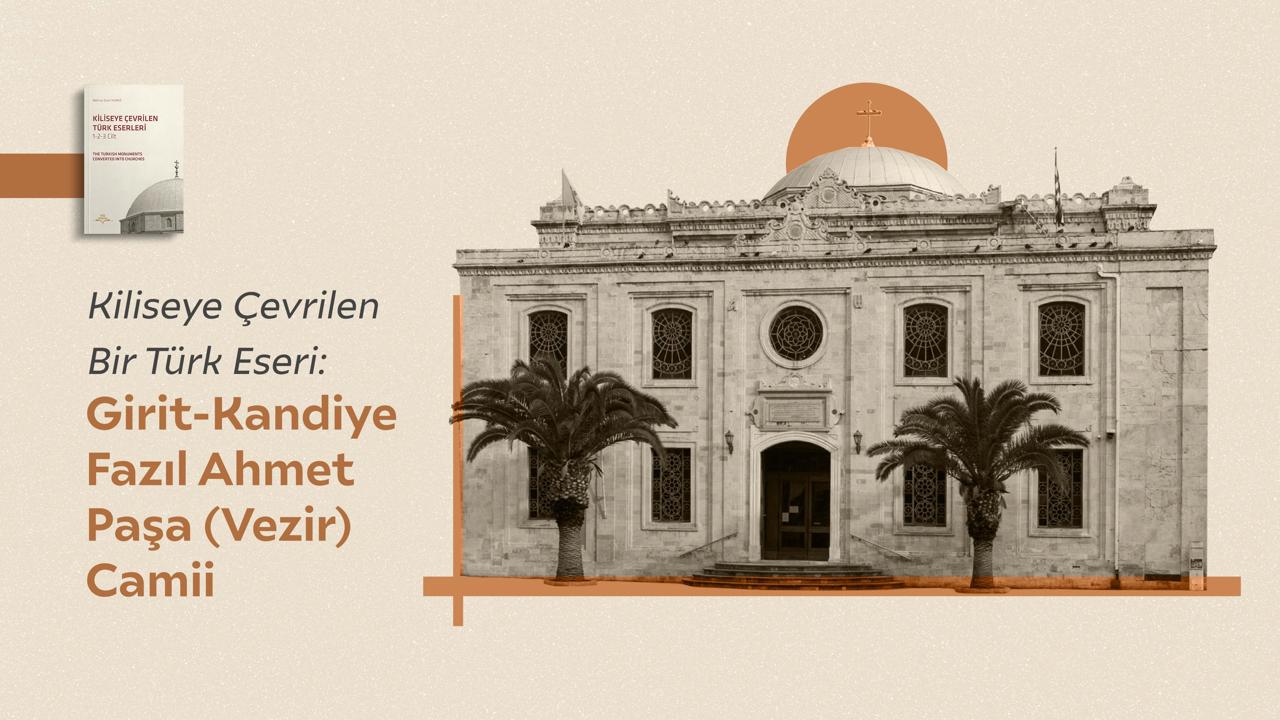Converted to Church: Fazıl Ahmet Pasha (Vizier) Mosque in Heraklion, Crete
Perşembe, Mayıs 2, 2024
Converted into a church named ‘Agiou Titou’ in 1924, Fazıl Ahmet Pasha (Vizier) Mosque still serves as a church. Described as ‘a high-rising and precious work of art’ by Evliya Çelebi and having stood still as shown in a postcard dating to 1913, the two-balcony minaret was demolished up to the pedestal when it was turned from a mosque into a church and had a bell tower built on top of it.
Known as Vizier Mosque, the monument is situated in downtown Heraklion, which was annexed by the Ottomans in 1669. The mosque was founded by Köprülü Fazıl Ahmet Pasha, who was also the conqueror of the castle. The mosque was built in 1678 and a minaret with two balconies was incorporated in 1685. In 1856, the mosque was completely destroyed in an earthquake and was rebuilt in 1869 by architect Athanasios Mousis thanks to the efforts of Grand Vizier Ali Pasha and was opened anew with a ceremony held in 1871. It is known that the mosque, which bears no construction inscription, boasts some repair inscriptions dating to Hijri 1288 (M.1871) and Hijri 1311 (1893-94).
The inscription reads as follows:
Surely the prayer is a duty upon the believers with fixed times. [Surah Nisa, Verse 103 ] / 1288 [1871] 1311 [1893]
The inscription was situated on the west front gate of the mosque when it was first built. The marble inscription was written by Mustafa Irfani Efendi, the famous calligrapher of the time, in a style of calligraphy called sülüs. We do not know whether the inscription remains today. There were also fountains, shadirvans, madrasahs, hazire (cemetery surrounded by walls or fences), soup kitchen and warehouses around the mosque. The precious tombstones inside hazire, which have survived to the modern day, are displayed in the Cretan History Museum.
Evliya Çelebi, who travelled to the city in the 17th century, describes the mosque as follows:
Since it is near the bazaar and market, it is abundant in the congregation. Its length and width are eighty feet. The mihrab is built of vaulted arches resting on four columns. The other parts are covered with lead on serial beams as was the case in the past. The mihrab and minbar of the mosque are completely decorated with crystal, najaf and moran glasses, and it is an extremely artistic mosque covered in light upon light. The front section of the mihrab is a wide street. To the east exists an Irem vineyard. The mosque has two gates. The small gate and the middle gate are made of three very large doors and all three open out to the east. The door on the left-hand side also faces the pool and fountain in the courtyard on the left. The fountain, a work of art, is covered with lead and of a high-rising dome. The master engineer of the dome has built the dome as a new invention, and he has placed the dome on six pieces of thin marble columns. To the left of the mosque is the congregation hall, the ceiling of which is made of embroidered beams roofed on made poles and completely covered in lead. A new minaret has just been built on the right hand side of the mosque, which is a high-rising and precious work of art.’
Converted into a church named ‘Agiou Titou’ in 1924, Fazıl Ahmet Pasha (Vizier) Mosque still serves as a church. Described as ‘a high-rising and precious work of art’ by Evliya Çelebi and having stood still as shown in a postcard dating to 1913, the two-balcony minaret was demolished up to the pedestal when it was turned from a mosque into a church and had a bell tower built on top of it. The marble minbar was removed in 1965.



